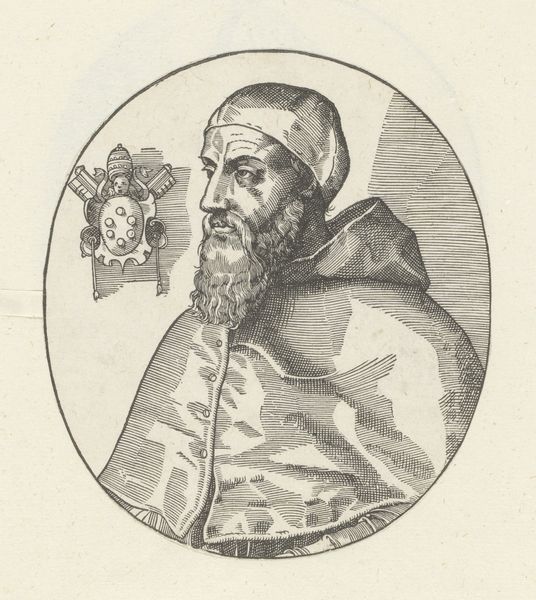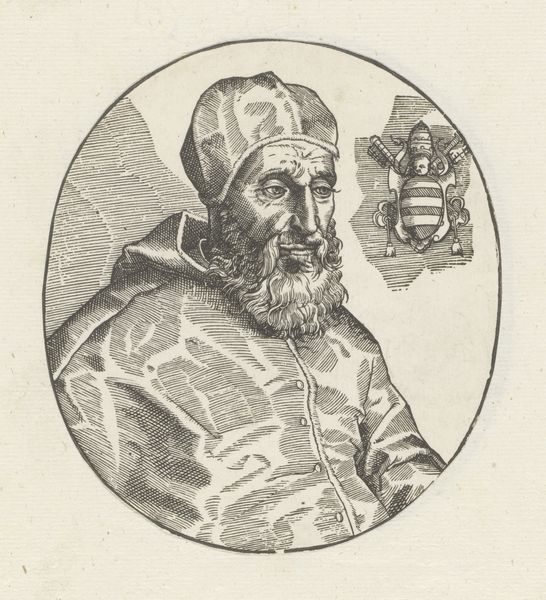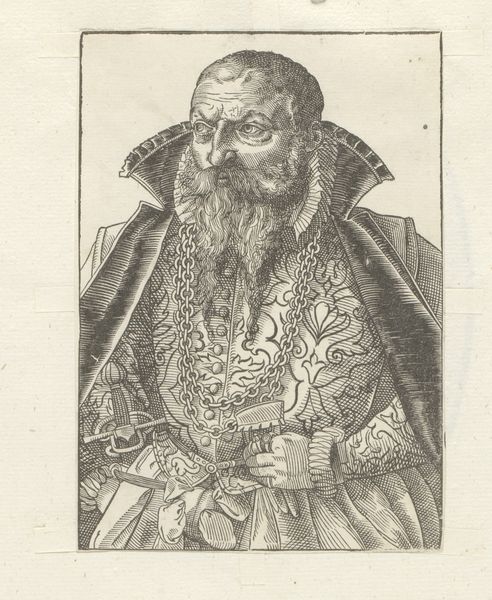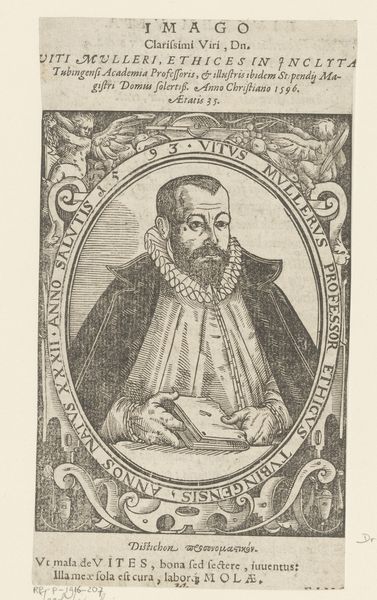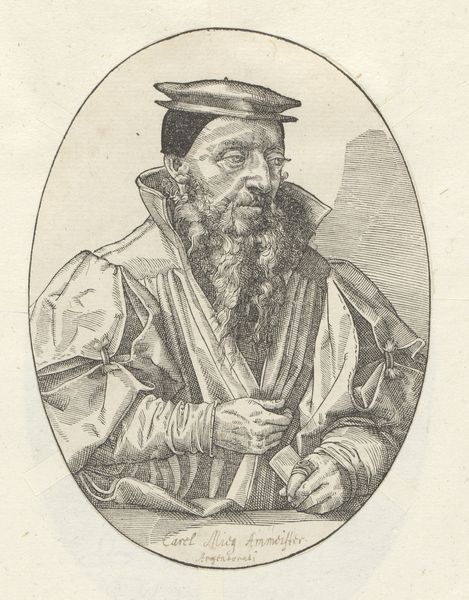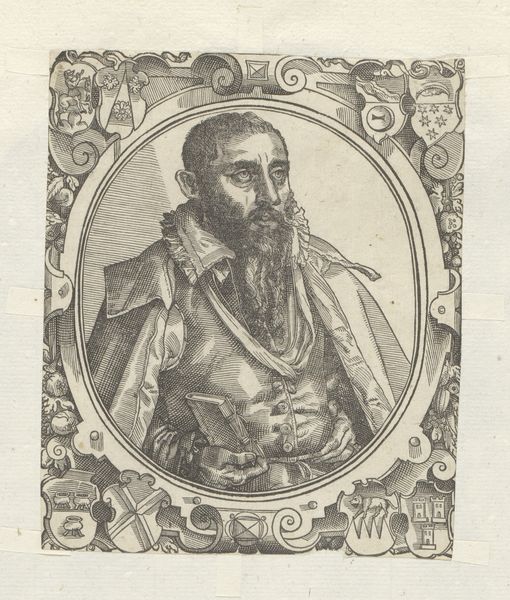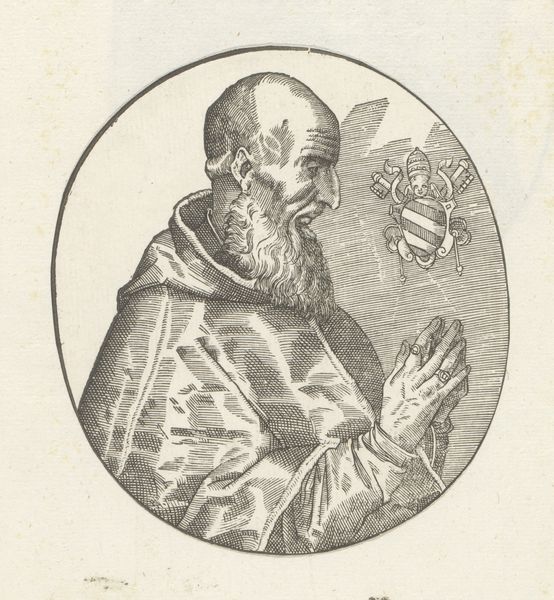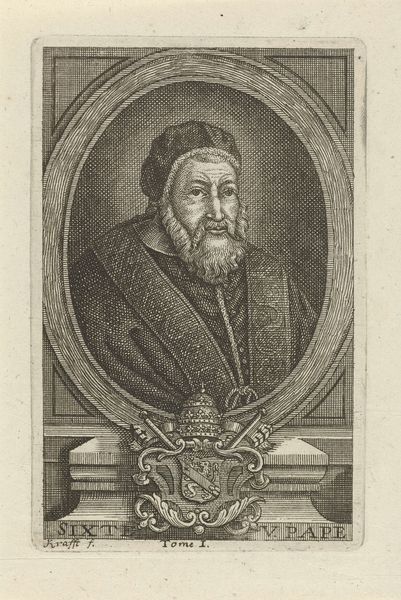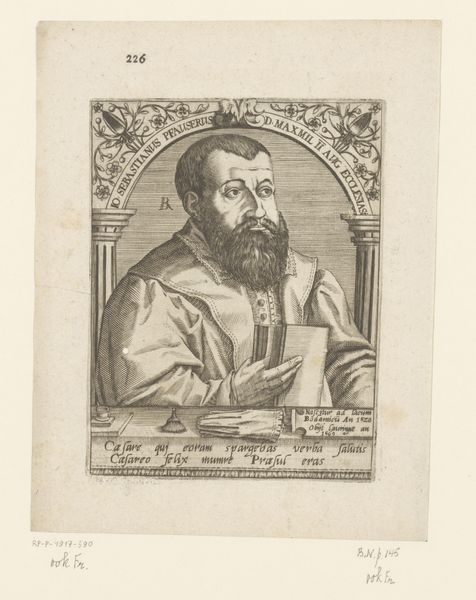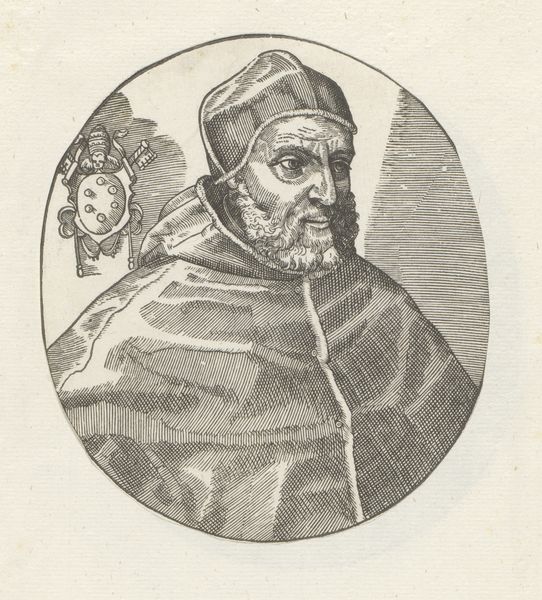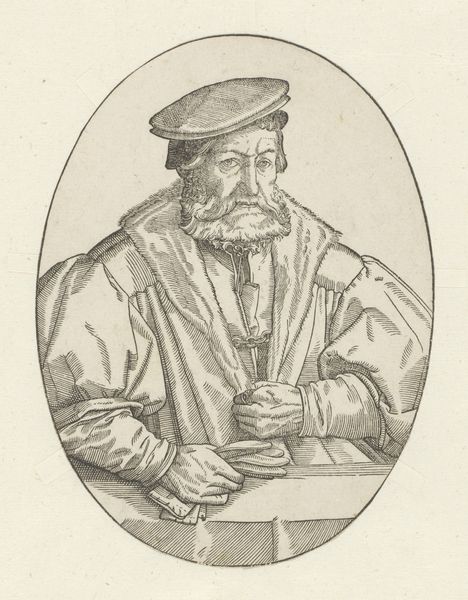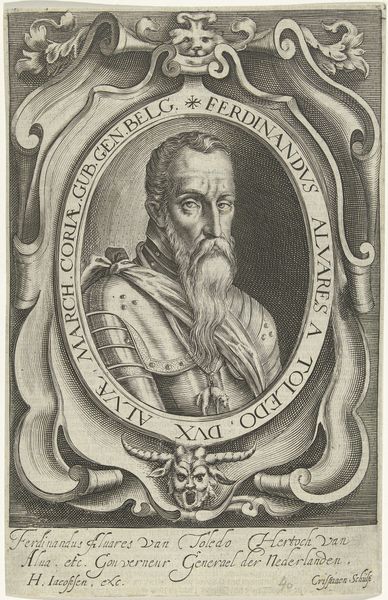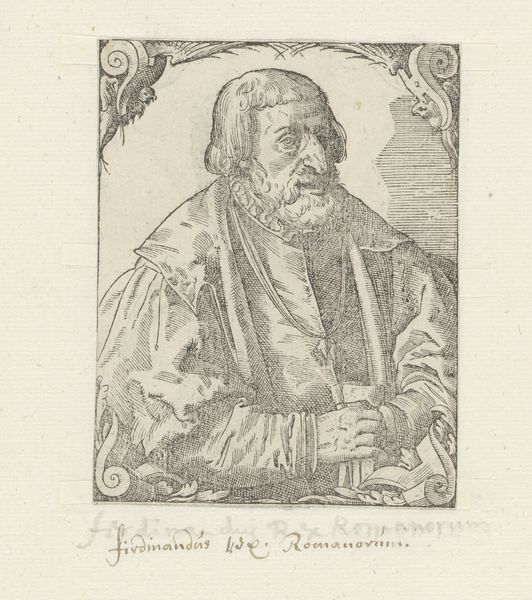
engraving
#
portrait
#
old engraving style
#
11_renaissance
#
portrait drawing
#
history-painting
#
italian-renaissance
#
engraving
Dimensions: height 127 mm, width 112 mm
Copyright: Rijks Museum: Open Domain
Editor: We’re looking at "Portret van paus Paulus III", a 16th-century engraving of Pope Paul III. It feels very austere and formal, focusing on the head and shoulders, and I’m immediately drawn to the intense detail achieved through the engraving process. What can you tell me about this piece? Curator: The meticulousness of the engraving itself speaks volumes. Consider the labour involved, the artist's hand meticulously etching lines into the metal plate. It transforms a portrait, usually reserved for the wealthy and powerful, into something reproducible. What impact might this accessibility have had on the perception of the papacy in the 16th century? Editor: That's interesting, I hadn’t considered the aspect of reproduction. Did it challenge traditional power structures by making his image widely available? Curator: Precisely. Think about the circulation of these engravings. Who had access to them? Were they primarily consumed by the elite, or did they find their way into more common spaces, reshaping public opinion through a mass produced format? Also, consider the cost. Engravings would be more accessible than painted portraits but were not free. So how does this access change with class? Editor: So, the act of creating and distributing the artwork changes how the Pope’s authority is presented and viewed in society? Curator: Exactly! The materiality of the engraving—the metal plate, the ink, the paper—and the process of its creation directly influenced its social and political significance. Understanding the ‘how’ reveals the ‘why’ behind its lasting impact. What assumptions did the original audiences bring to these images? Editor: That’s a great perspective. I definitely appreciate how focusing on the materials and the labor of creation helps understand the artwork’s wider impact on society. Curator: Absolutely. By investigating the making, distribution, and consumption, we unlock insights beyond the immediately visible image. We can thus build a much deeper insight into historical assumptions.
Comments
No comments
Be the first to comment and join the conversation on the ultimate creative platform.
